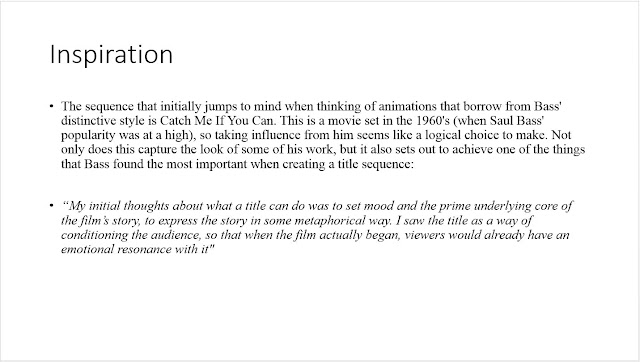1920 Saul Bass is born in the Bronx district of New York
1936 Wins a scholarship to study at the Art Students' League in Manhattan
1938 Employed as an assistant in the art department of the New York office of Warner Bros
1944 Joins the Blaine Thompson Company, an advertising agency, and enrolls at Brooklyn College, where he is taught by the émigré Hungarian designer and design theorist Gyorgy Kepes
1946 Moves to Los Angeles to work as an art director at the advertising agency, Buchanan and Company
1952 Opens his own studio, named Saul Bass & Associates in 1955
1954 Designs his first title sequence for Otto Preminger’s Carmen Jones
1955 Creates titles for Robert Aldrich’s The Big Knife and Billy Wilder’s The Seven Year Itch. The animated sequence he devises for Preminger’s The Man with a Golden Arm causes a sensation
1956 Elaine Makatura joins the studio as an assistant
1957 Devises titles for Michael Anderson’s Around The World in 80 Days and Preminger’s Bonjour Tristesse
1958 Forges a new collaboration with Alfred Hitchcock by designing the titles for Vertigo. Works with the architects Buff, Straub & Hensman on the design of his home, Case Study House #20 in Altadena
1959 Creates the title sequences for Hitchcock’s North by Northwest and Preminger’s Anatomy of a Murder
1960 First title commission for Stanley Kubrick, Spartacus, and the last for Hitchcock, Psycho
1962 Devises titles for Edward Dmytryk’s Walk on the Wild Side and directs his first short film, Apples and Oranges. Marries Elaine Makatura
1963 Stanley Kramer commissions Bass to create titles for It’s A Mad, Mad, Mad, Mad World
1966 Directs the racing sequences and devises the titles for John Frankenheimer’s Grand Prix
1968 Wins an Oscar for the short film Why Man Creates and develops a corporate identity programme for the Bell System telephone company. Creates an installation for the Milan Triennale, which is cancelled after a student occupation
1973 Designs the corporate identity of United Airlines
1974 Directs his first feature film Phase IV
1980 Designs the poster for Stanley Kubrick’s The Shining and devises the corporate identity of the Minolta camera company
1984 Creates a poster for the Los Angeles Olympic Games
1987 James L. Brooks persuades Bass to return to title design by creating the opening sequence of Broadcast News
1990 Begins a long collaboration with Martin Scorsese by creating the titles for GoodFellas
1991 Devises the titles for Scorsese’s Cape Fear and a poster for the 63rd Academy Awards. Bass designs the Academy Awards poster for the next five years.
1993 Creates the title sequence for Scorsese’s The Age of Innocence and a poster for Steven Spielberg’s Schindler’s List
1995 Designs titles for Scorsese’s Casino
1996 Saul Bass dies in Los Angeles of non-Hodgkins lymphoma
http://design.designmuseum.org/design/saul-bass
Design.designmuseum.org (2015)






















